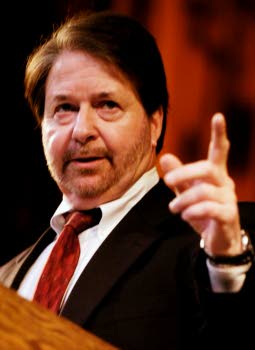TomDispatch.com: Brown, The Virginia Tech Massacre in Global Context
Tomgram: Brown, The Virginia Tech Massacre in Global Context
Last January 16th, a car bomb blew up near an entrance to Mustansiriya University in Baghdad — and then, as rescuers approached, a suicide bomber blew himself up in the crowd. In all, at least 60 Iraqis, mostly female students leaving campus for home, were killed and more than 100 wounded. Founded in 1232 by the Abbasid Caliph al-Mustansir, it was, Juan Cole informs us, “one of the world’s early universities.” And this wasn’t the first time it had seen trouble. “It was disrupted by the Mongol invasion of 1258.”
Just six weeks later, on February 25, again according to Cole, “A suicide bomber with a bomb belt got into the lobby of the School of Administration and Economy of Mustansiriya University in Baghdad and managed to set it off despite being spotted at the last minute by university security guards. The blast killed 41 and wounded a similar number according to late reports, with body parts everywhere and big pools of blood in the foyer as students were shredded by the high explosives.” The bomber in this case was a woman.
In terms of body count, those two mass slaughters added up to more than three Virginia Techs; and, on each of those days, countless other Iraqis died including, on the January date, at least thirteen in a blast involving a motorcycle-bomb and then a suicide car-bomber at a used motorcycle market in the Iraqi capital. Needless to say, these stories passed in a flash on our TV news and, in our newspapers, were generally simply incorporated into run-of-bad-news-and-destruction summary pieces from Iraq the following day. No rites, no ceremonies, no special presidential statements, no Mustansiriya T-shirts. No attempt to psychoanalyze the probably young Sunni jihadis who carried out these mad acts, mainly against young Shiite students. No healing ceremonies, no offers to fly in psychological counselors for the traumatized students of Mustansiriya University or the daily traumatized inhabitants of Baghdad — those who haven’t died or fled.
We are only now emerging from more than a week in the nearly 24/7 bubble world the American media creates for all-American versions of such moments of horror, elevating them to heights of visibility that no one on Earth can avoid contemplating. Really, we have no sense of how strange these media moments of collective, penny-ante therapy are, moments when, as Todd Gitlin wrote recently, killers turn “into broadcasters.” Like Cho Seung-Hui, they go into “the communication business,” making the media effectively (and usually willingly enough) “accessories after the fact” in what are little short of pornographic displays of American victimization.
Finally, articles are beginning to appear that place the horrific, strangely meaningless, bizarrely mesmerizing slaughter/suicide at Blacksburg — the killing field of a terrorist without even a terror program — in some larger context. Washington Post on-line columnist Dan Froomkin caught something of our moment in his mordant observation that, at the White House Correspondents Association Dinner the other evening, with the massed media and the President (as well as Karl Rove) well gathered, “the tragic Virginia Tech massacre required solemn observation and expressions of great respect, while the seemingly endless war that often claims as many victims in a day deserved virtually no mention at all.” Los Angeles Times columnist Rosa Brooks took a hard-eyed look at the urge of all Americans to become “victims” and of a President who won’t attend the funeral of a soldier killed in Iraq to make hay off the moment. (“It’s a good strategy. People busy holding candlelight vigils for the deaths in Blacksburg don’t have much time left over to protest the war in Iraq.”); and Boston Globe columnist James Carroll offered his normal incisive comments, this time on “expressive” and “instrumental” violence in Iraq and the U.S. in his latest column. He concluded: “Iraqi violence of various stripes still aims for power, control, or, at minimum, revenge. Iraqi violence is purposeful. Last week puts its hard question to Americans: What is the purpose of ours?”
Sometimes, in moments like this, it’s actually useful to take a step or two out of the American biosphere and try to imagine these all-day-across-every-channel obsessional events of ours as others might see them; to consider how we, who are so used to being the eyes of the world, might actually look to others. In this case, John Brown, a former U.S. diplomat, one of three State Department employees to resign in protest against the onrushing war in Iraq in 2003, considers some of the eerie parallels between Cho’s world and George’s. Tom
 Robert Felner, former dean of the College of Education and Human Development at the University of Louisville and convicted felon, is schedule to be release from federal prison today.
Robert Felner, former dean of the College of Education and Human Development at the University of Louisville and convicted felon, is schedule to be release from federal prison today.
 Follow
Follow